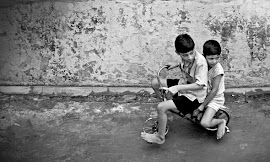Education for all: Have children benefited?
IN INDIA, education is a subject on the concurrent list, making it a concern of both the Central and state governments. Since independence, state governments have been the major providers of elementary education in India. However the wide differences between states in the emphasis they placed on education and in their capacities to invest in it, accentuated the disparities in the education system. In 1986, the government of India brought out its landmark new education policy. It made primary education a national priority and envisaged an increase in resources committed to at least six per cent of the GDP. At the same time, the Central government also launched several centrally sponsored schemes to improve primary education across the country.In the mid 1990s, a series of district primary education programmes (DPEP) were introduced at district level where female literacy rates were low. The DPEPs pioneered new initiatives to bring out-of-school children into school, and were the first to decentralise planning for primary education and actively involve communities.
Education for all: Sarva Shiksha Abhiyan In 2001, the Central government introduced its flagship Sarva Shiksha Abhiyan (SSA) programme to provide elementary education for all Indian children. The SSA is one of the largest programmes of its kind in the world. It builds on the pioneering initiatives of the DPEPs and seeks to meet the needs of almost 200 million children living in over a million habitations across the country. It is one of India first major programs to cover upper primary education grades 6-8 as well.
Goals: The program aims to enroll all 6-14 year-olds in school by 2010, retain them in school, and provide them with quality education at least till grade eight - a much tougher requirement than meeting the millennium development goal (MDG) by 2015. To achieve this goal, the programme is improving access to education by making a primary school available within one kilometer of all habitations, mobilising communities in favour of education, supporting the training of teachers, developing teaching materials and monitoring learning outcomes. Special focus groups: The program seeks to reduce gender and social gaps by specially focusing on girls, children from disadvantaged groups such as scheduled castes and scheduled tribes, those belonging to minority communities, as well as children with special needs.
Decentralised: Given India’s diversity and its large federal system, the programme is highly decentralised. While overall directions are set centrally, the SSA provides ample flexibility to India states to design their own context-specific strategies. Schemes are delivered through implementing agencies at the state, district and, most importantly, the village level.
Partnerships: Over 7,000 NGOs are participating in the SSA. They are helping to bring out-of-school children into school by providing alternative education programs or bridge courses. They are also building the capacity of local village education committees, and monitoring the quality of education provided. The SSA is complemented by another national program - the Mid-day meal scheme - which provides free hot cooked meals to all children in state primary schools every day as an incentive for them to remain in school.
Financing: The Central government has invested major financial and technical resources into the program. In 2006-07, 3.6 per cent of the country’s GDP was invested in educationState and Central government expenditure on education together accounted for 13 per cent of their combined budgets. Expenditure on elementary education alone accounted for 53.5 per cent of the total education budget in the country (2006-07). An education cess of 2.0 per cent is levied on both direct and indirect taxes to generate resources for the program.
World Bank support: The programme, which is essentially government led, is collectively supported by the World Bank, the European Commission and United Kingdoms DFID; of these the World Bank is the single largest contributor. In the first phase of support (SSA I: 2003-2006) the World Bank contributed $500 million of the total programme cost of $3.5 billion.
SSA II: In the second phase of support (coinciding with the 11th Plan: 2007 - 2012) the World Bank is providing US$600 million. With the country estimated to spend an enormous US$17.75 billion on primary education, the World Bank remains a small player, financing less than 6 per cent of the total government expenditure on the programme.
.jpg)








.jpg)

0 comments:
Post a Comment